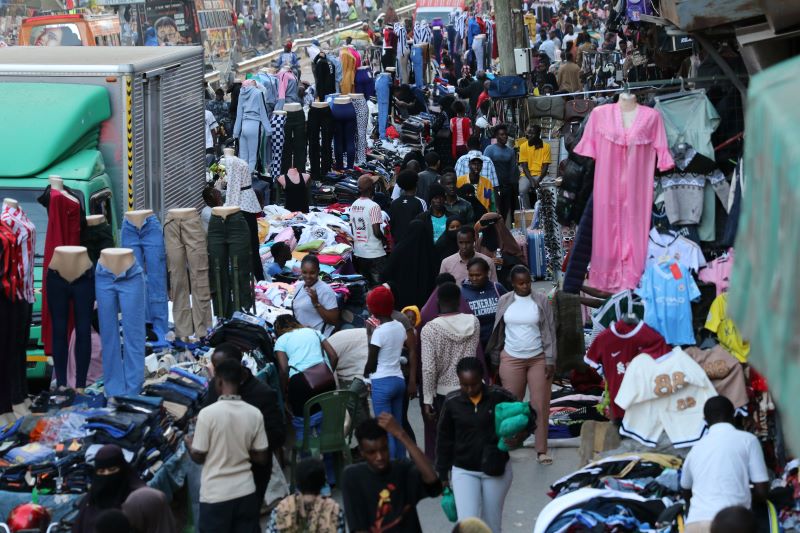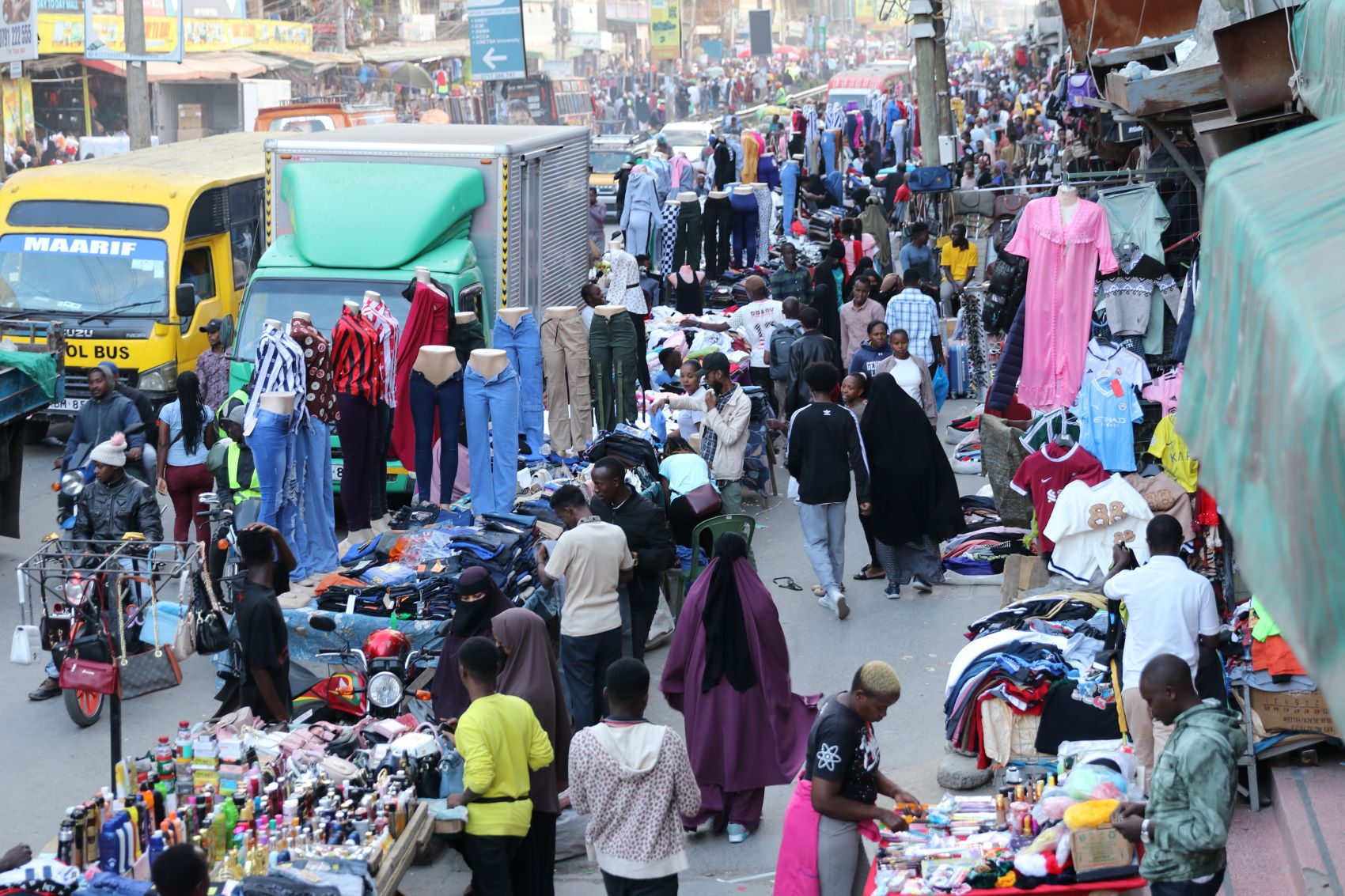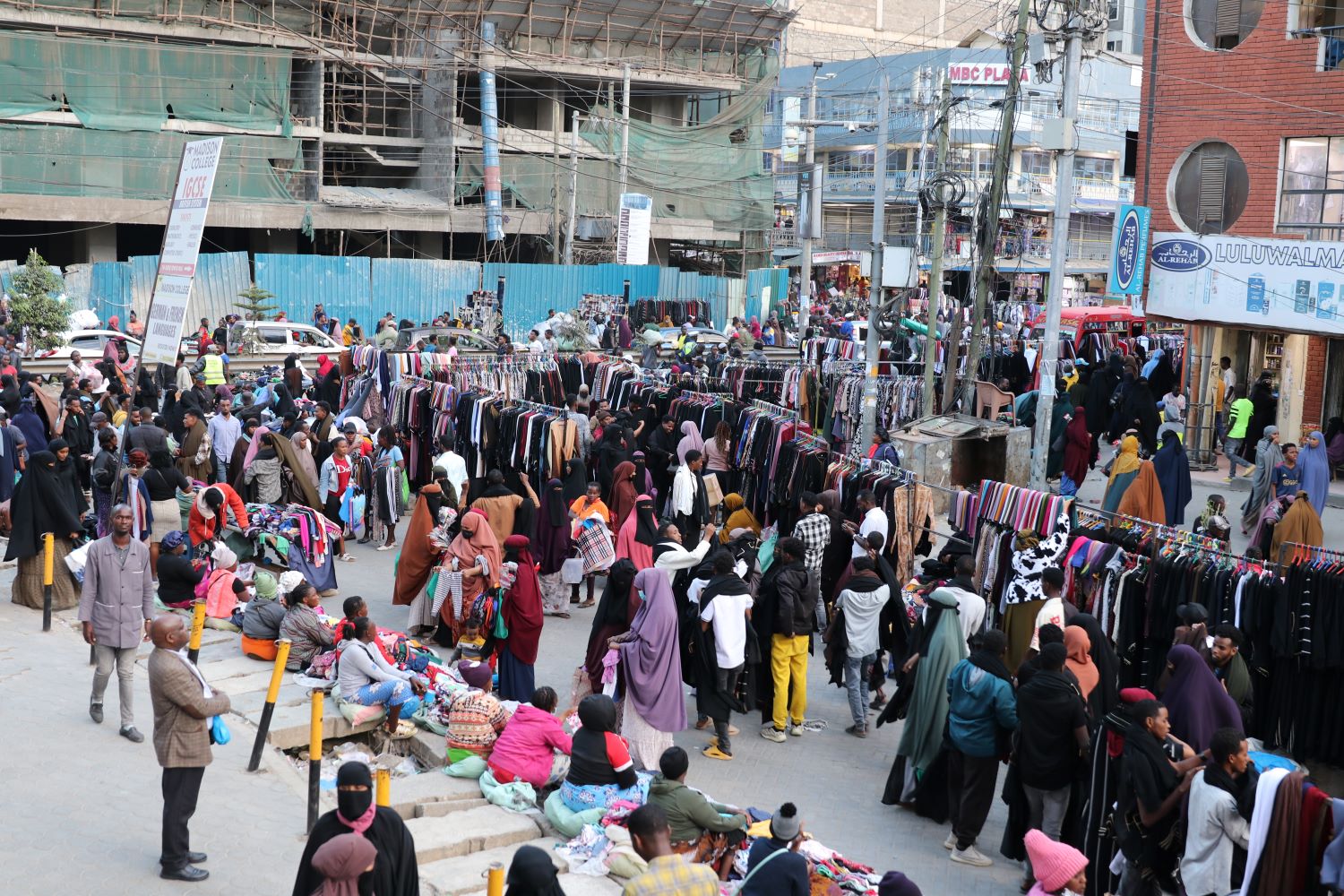Matatus, hawkers and licensed traders in stiff competition for space in Eastleigh

Finding a balance between supporting hawkers and maintaining urban order remains a challenge for Nairobi's authorities.
As I venture into the pulsating streets of Eastleigh, I am immediately enveloped in a whirlwind of chaos.
The air is thick with the cacophony of hawkers calling out their wares, the steady hum of matatus competing for passengers, and the persistent weaving of boda boda through the crowded pavements.
More To Read
- ‘Plant trees, not trouble’: Eastleigh official urges unity in climate and crime fight
- Safaricom partners with Eastleigh business community to enhance network and internet connectivity
- Eastleigh traders count losses as Yusuf Haji Road remains in darkness
- Robots, smart tables and Somali flavours: Eastleigh’s AK’s Restaurant is the future of dining
- Kamukunji marks Mashujaa Day with tributes to Raila amid calls for unity
- How blocked drainage systems, open sewers threaten lives, businesses in Eastleigh
As I navigate the crowded streets of Eastleigh, I find myself in the midst of a battlefield. Hawkers swarm the pavement, forcing me to join the fray on the road.
Parked vehicles further impede the already congested street, leaving little room for pedestrians and shoppers to navigate.
Amidst the mayhem, a blood-curdling scream pierced the air, drawing my attention to a disturbing scene. A young man lies injured, a victim of a boda boda rider's reckless attempt to squeeze through the matatus that had blocked the road to pick up passengers.
I watch in horror as the scene unfolds, wondering how this thriving commercial hub has descended into such chaos.
The hawker and matatu menace has taken over Eastleigh and it is having an immense impact on residents and visitors alike.
The history of the hawker and matatu menace in Eastleigh dates back to the early 2000s when the area began to experience rapid growth and development.
As more people moved into the area, the demand for transportation and goods increased, leading to an influx of matatus and hawkers.
Initially, the hawkers and matatus operated in designated areas. But as the years went by, they began to spill over into other areas, causing congestion and chaos. The hawkers, who were mostly small-scale traders, set up shop on pavements and roadsides, blocking pedestrian paths and creating obstacles for vehicles.
Matatus, originally intended to provide transportation services, started operating in an unregulated manner, causing traffic snarls and posing a threat to other road users.
They would park on the roadsides, blocking traffic and creating bottlenecks, and their drivers would often engage in reckless behaviour such as speeding and reckless driving.
Aggressive hawkers
Despite efforts by the authorities to regulate the hawkers and matatus, the problem persisted, with the two groups often colluding to create a no-go zone for pedestrians and other vehicles.
The situation has continued to deteriorate over the years, with the hawkers and matatus becoming more brazen and aggressive, leading to a breakdown in law and order in the area.
 Hawkers and traders on Yusuf Haji Road (First Avenue) in Eastleigh. (Photo: Amin Abdullahi/EV)
Hawkers and traders on Yusuf Haji Road (First Avenue) in Eastleigh. (Photo: Amin Abdullahi/EV)
Today, the hawker and matatu menace in Eastleigh remains a major challenge, with residents and visitors struggling to navigate the congested streets. The situation has also led to concerns about safety, with many people falling victim to accidents.
The fracas between hawkers and traders in Eastleigh are not news. It stretches from the grimy sidewalks of the Central Business District (CBD) to the chock-a-block roads in Eastleigh.
In 2016, the Eastleigh business community closed all their major businesses and marched to City Hall to complain about the hawkers’ wriggling tendencies in their businesses.
With the blooming existence of hawkers and matatu menace in the streets of Eastleigh, it is important that everyone involved examines the challenges and seeks solutions.
Eastleigh traders seem to have reached a boiling point over the persistent hawkers' issue, staging protests and pleading for relief.
"We have faced this problem for 15 years, and it's only worsening," says Abdirahman Adan, a 40-year-old trader, adding, “Hawkers pose a business threat, stealing designs and selling copies at lower prices, causing traffic and chaos. No customer wants to deal with the hassle of passing through hawkers to reach our shops. We pay rent, licenses, and taxes. Our concerns should be prioritised".
Abdirahman emphasises traders are seeking a solution to the endless disarray and urges authorities to take action against hawkers and restore order in Eastleigh.
Amos Kyalo, a 22-year-old hawker, sets up his stand, hoping to make a living amidst the chaos.
Harassment claims
"We want to earn a living peacefully, but it's a daily struggle," he says. Hawkers like Amos face harassment from authorities and traders, who accuse them of stealing designs and selling them cheaply.
Single mother Mariam Mohamud, who operates in the evening, disputes these claims. "We work hard to make these dresses from scratch. Traders just want to create a problem for us," she
Residents like Nasra Said feel the hawkers' presence has made Eastleigh impassable.
"It's a daily struggle for my kids to navigate through the hawkers and vehicles. We need control and management to avoid chaos," Nasra says.
The hawkers' mantra, what is sauce for the goose is sauce for the gander, reflects their desire for a fair chance to thrive.
With no supervision and irregularities, however, tensions persist. The city's hawking policies aim to balance the needs of these informal traders with the need for order and cleanliness in the city centre.
Nairobi County’s Chief Officer for Trade, Markets, and Cooperatives Godfrey Akumali says hawkers are allowed to operate in designated areas, such as alleys and lanes, from 4 pm onwards. Each hawker is required to have a 3x3 pellet and only one trader is allowed per walkway.
 Hawkers and traders on Yusuf Haji Road (First Avenue) in Eastleigh. (Photo: Amin Abdullahi/EV)
Hawkers and traders on Yusuf Haji Road (First Avenue) in Eastleigh. (Photo: Amin Abdullahi/EV)
Despite these regulations, authorities face challenges in enforcing them. "The formal traders translate into informal traders, the hawkers in the evening, and the problem becomes bigger," Mr Akumali notes. Hawkers often extend their wares onto the sidewalks, blocking pedestrian paths and causing chaos.
Moreover, the renting out of spaces in front of buildings by caretakers to hawkers leads to congestion and makes it difficult to control the situation. Hawkers also fail to self-regulate, leading to dumping and environmental concerns, Akumali says.
Dumping problem
"Hawking also comes with the problem of dumping. The streets and roads have become dirty," the county official says.
The lack of self-regulation forces authorities to police hawkers, leading to confrontations and giving the impression that the government is not supportive of their livelihoods. Finding a balance between supporting hawkers and maintaining urban order remains a challenge for Nairobi's authorities.
"If you go to Eastleigh, you will see the traders setting up curtains and carpets on the roads, not adhering to the 3 by 3 pellet rule. Ideally, a hawker should not have too much stock," Akumali notes.
Ultimately, addressing these challenges requires cooperation between hawkers, authorities, and the wider community to ensure that hawking can continue in a way that benefits all parties involved.
 Hawkers and traders on Jam Street in Eastleigh. (Photo: Amin Abdullahi/EV)
Hawkers and traders on Jam Street in Eastleigh. (Photo: Amin Abdullahi/EV)
In a bid to address the hawking issue in Eastleigh, Akumali proposes a series of solutions.
"We need traders to have enough discipline not to transform themselves into informal traders, and the number would reduce by half," he says.
Other measures include adherence to the 3 by 3 pellet rule, creating an environment for traders amidst competition and chaos, and communicating with local leaders to restrict hawking to designated hours and areas.
Akumali stresses the importance of mutual respect, stating, "Where one's rights end, another person's rights begin. Everyone needs to be a responsible citizen and look out for others as well."
Traders, hawkers, the business community, and county officials are planning a major meeting to find a comprehensive solution. In addition, the authorities are implementing initiatives for hawker self-regulation and garbage collection.
"For every 10 hawkers, we will have a leader amongst them to regulate and govern their area well," Akumali says.
Only time and collaboration will tell whether these solutions can bring order to Eastleigh's bustling streets.
Top Stories Today












































